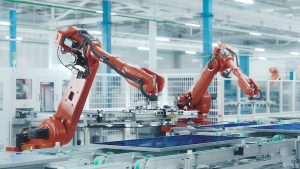As we saw before in part 1, the contactor requirements for hoisting machines are suitable for all types of hoisting systems, therefore we should assume as a first fact that we need to select a contactor according to the location and environmental conditions that affects the hoisting machine, and that any contactor for any hoisting application should meet the minimum requirements of manufacturing and safety for a correct operation.
According to IEC, the process of “selection of contactors” should meet the following requirement…
4.2.2 Selection of power contactors The contactors with their associated short-circuit protective devices shall have type “2” coordination in accordance with IEC 60947-4-1, 8.2.5.1. Contactors which perform the stopping function of motion drives, initiated by safety-related control circuits, shall be selected and arranged with other equipment in such a way that contact welding either will not occur or will not prevent the emergency stop function. The supplier’s recommendations should be followed (see also 7.2.9). NOTE Contactors directly controlling motions and demanding a great number of contactor operations should have a mechanical life of at least 3 million operating cycles.
The requirements are quite clear, all contactors for hoisting machines should comply with IEC 61947-4-1 and shall have coordination type “2”, but what does coordination type “2” mean? Coordination type “2” refers to a equipment that under short circuit fault, shall cause no danger to persons and installations, and shall be suitable for further use. The standard recognizes the contact welding risk, but the manufacturer should take measures for an effective maintenance of contactors. Furthermore, the minimum operation cycle should be over 3 million cycles do to the fact hoisting systems run all day switching motors for controlling the complete mechanism.
As you can see, the first requirements are hard to achieve if a contactor is poorly manufactured or a poor quality control process.
Then, when we refer to the environmental condition, it’s common to see a lot of different conditions around the world, but there are specific industries that have extreme conditions that make it difficult for normal responses of electrical devices. Here in Chile, it is common to face high altitude mining operations, extreme low temperature in maritime terminals or high humidity in wood explotation industries, so environmental requirements are really important to ensure correct operation of devices.
In part 3, we will explain the detail of environmental requirements and will review some examples of extreme operation conditions.



